
















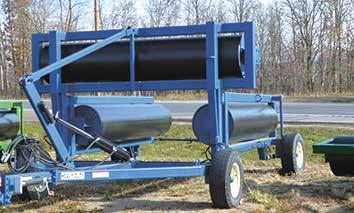







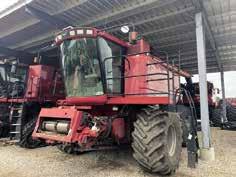





























































 By Amy Kyllo amy.k@star-pub.com
By Amy Kyllo amy.k@star-pub.com
FALCON
Minn. — As Rachel Visser stood in the ring at the Minnesota 4-H Dairy Showcase, it was hard to look into the crowd of people.

“Every time I would look out into the crowd, I saw a face of someone who has cheered

me on since I started in the project and been a mentor and an inspiration to me in the dairy project,” Visser said.
Visser, of McLeod County, was named the top dairy youth out of the 25 honorees at the Minnesota 4-H Dairy Showcase. The other top three participants were Dan Frericks of Stearns County and Alexis Hoefs of Le Sueur County, who is the daughter of James and Lisa of New Prague.
Frericks, the son of Glen and Sadie of Melrose, said he was shocked to be honored with the second-place recogni-
tion.
“That was a heart in your throat kind of moment that you don’t experience too often,” he said.
This year was the Minnesota 4-H Dairy Showcase’s 15th year. The honorees are those who have completed ninth to 12th grade in addition to the rst year after high school. Younger students involved in dairy may apply for the Rising Stars. The 10 Rising Stars honorees have completed sixth to eighth grade.
All showcase honorees receive a check of descending



Bruce Belter • 507-429-0359

Holstein Steers
• Lean Cows
• Bulls
• Fed Cows
Tyrel Lembke • 877-300-9298

Long Prairie, MN
Lean Cows
• Bulls
Dean Derricks
Green Bay, WI
Holstein Steers




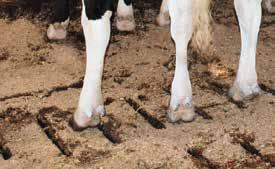
• 920-655-4730
• Fed Cows
Chad McQuade
Yankton, SD
Lean Cows
• Bulls
Mike Baczwaski
Gibbon, NE
Fed Cows
• Lean Cows
Cody Ritter
• Lean Cows
• 605-668-4275
• 800-445-0042
• Bulls
• 320-293-5212
Long Prairie, MN
• 320-732-8358

value from rst to 25th. Rising Stars participants all receive a check of equal value. This year the showcase awarded $57,500.
The money is raised through donations, 80% of which goes directly into scholarships for the kids and the rest which goes toward showcase costs and 4-H program needs.
All-time donations for the showcase exceed $650,000.

For Visser, the showcase is not about the money.

“The 35 kids who are recognized, they get a good check at the end of the day, but it’s



about being recognized for their hard work and accomplishments and giving back to the people who have helped them develop their interest in the industry and in their projects,” Visser said. “It’s a really cool program to give back to the kids but also encourage kids to keep being involved in giving back to others.
Visser is the daughter of Barry and Shannon of Hutchinson.
Participants are judged using a point system on their 4-H




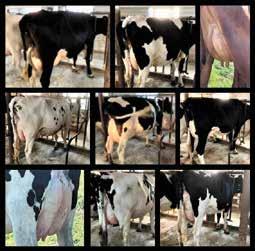


dairy involvement and results as well as a written application. In order to be eligible, students must have won at least a blue ribbon for a dairy animal at the state fair.




Frericks said earning points toward showcase for dairy involvement is above and beyond the pure enjoyment of participating and that the showcase is a good way to nish the state fair.


“It sums up all of your successes, failures, blood, sweat and tears that you put into 4-H with dairy,” he said. “They kind of put that all into a bucket.”
Part of the written application includes two essay questions on relevant industry topics. This year, one of the questions revolved around the optimal features for a cow for functionality and compared and contrasted that to a cow bred for the show ring.


The other question regarded the inclusion of funding for the Supplemental Nutrition Assistance Program in the 2023 farm bill.


The application also asked the applicants to list their top 4-H achievements and several life accomplishments.
Hoefs listed being the Kolacky Queen as one of her life accomplishments. Hoefs gave an informative speech on her family’s dairy farm during the talent portion of the pageant judging.
“Our farm has been around since 1861,” she said. “I thought it’d be a really cool thing to share, how it got started back then and how we’ve progressed it as the dairy industry has changed.”

All three of the top showcase winners are planning to major in agriculture degrees in college.
“These great people within the industry have been awesome leaders and mentors for me and have shown me what I want to do in my future and what kind of person I want to be for younger kids,” Hoefs said.
Visser has seen the difference 4-H made in her attitude toward the dairy community.
“It’s certainly grown my passion for the industry,” she said. “I’ve been able to meet incredible people and have some super cool mentors along the way.”

Visser also participated in the showcase with her two sisters, all of whom placed in the top 15.
The top three winners each have a different background in the dairy community. Hoefs is the seventh generation on her family farm, while Frericks’ parents are the rst generation on their dairy farm. Visser did not grow up on a dairy farm but has participated in dairy through the lease program for the past 10 years.

Visser is thankful for those who gave to the showcase.
“It’s so cool to know that there’s an industry that’s willing to support youth in the project and encourage us to continue becoming involved and learn more about our projects,” she said.
The Minnesota 4-H Dairy Showcase is a points-based recognition program that recognizes the involvement, dedication and passion of Minnesota’s dairy youth. More than $55,000 in cash prizes were awarded to the state’s top 4-H dairy project members in 2023. Selection is based on receiving a purple or blue ribbon with their animal, earning points for involvement in the project and completing a leadership profile. A group of 10 dairy project members who scored well and have just completed grades 6, 7 and 8 were also recognized as the program’s Rising Stars.

Compeer

Gopher
Midwest
Dairy Showcase Core Committee: Theresa Reps, Robert Sheehan (co-chairs), Lana Beckard, Dr. Les Hansen, Gabriella Houdek Patrick Jirik, Sherry Newell, Steve Pooch, Brad Rugg, Sarah Schmidt
Special thanks to Dairy Star for their donation of publicity.








ASHLAND, Va. — Missy Stanley said being a dairy farmer’s wife is not for the faint-hearted, but she is proud of what her husband has achieved and glad to have been part of it.
“I am a Kentucky beef and tobacco farmer’s granddaughter, so farming wasn’t completely new to me, but dairy denitely was,” Stanley said.




When Stanley married her husband, Joel, and moved to the farm he owns with his dad and brother, she grew a respect for the dairy farming life.
“I’ve watched my husband work his way up, and I’ve seen the dairyman he’s become, how many improvements he’s made to cow health and production — and he really enjoys it,” Stanley said. “We take pride that we’re producing a wholesome product for the population.”
This summer, Stanley and her husband began producing ice cream that they make under a new business venture called
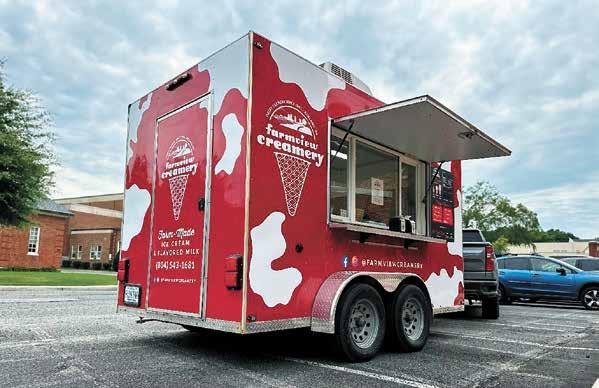
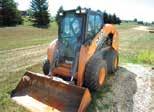
Farmview Creamery and sell at locations in the area from their ice cream trailer.
The Stanley farm is the last remaining dairy farm in Hanover County. Joel is the fourth generation there. The farm’s location, Stanley said, is in a suburban area where people are usually not well-informed about agriculture.
“Richmond has spread in all directions, and our county has grown like crazy,” Stanley said. “There are probably only three dairies left within about a 30-mile radius.”
Joel and his father milk
160 Holsteins in a double-8 herringbone parlor. With 250 acres they own and close to 750 acres they rent, the Stanleys grow mostly feed for their herd but also sell soybeans, hay, barley and corn. In the last three years, they have started breeding lower-producing cows with beef semen and are now up to 30 head of beef cattle.
Stanley helps her husband and father-in-law when needed, but she mostly serves as bookkeeper and also has a fulltime job at a nearby college. Her daughter and her nephew, the son of Joel’s brother who is a silent partner in the farm, help as well. The farm also employees four people.
Milk from the farm is
picked up once a day by Dairy Farmers of America and brought to Newport News, one of ve Maryland & Virginia Milk Producers Cooperative processing locations.
Stanley and her husband began thinking about how to bring awareness to the com-
munity while also diversifying their farming operation.



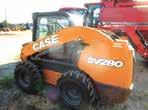
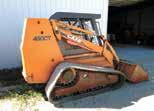







“We’ve had this dream for years to sell ice cream or bottled milk,” Stanley said. … “We thought this would be a way for us to connect with (consumers). Also, we thought this might be something that
the next generation might be more interested in doing than running the traditional dairy.” That is how Farmview Creamery was born.
Turn


“In 2018, we started visiting other on-farm processors and ultimately decided we weren’t quite ready to make the investment to process our own milk,” Stanley said. “We thought (making and selling ice cream) would be a good rst step to make sure that it had demand in the community and that it was something we wanted to do.”
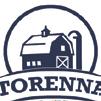

Stanley said changes are always in careful increments. About a year ago, they bought a trailer and retrotted it with an ice cream freezer. A concrete room in their old tiestall barn was refurbished into a small ice cream processing plant that has since been given the stamp of approval by the Virginia Department of Agriculture.

“It’s been a big learning experience for me, not really having any experience (prior) in the food service industry,” Stanley said. “I was guring out the procurement side of it and making ice cream at night after (working all day) at my job.”
Stanley started practicing with ice cream mixes and her own avoring combinations. She invited in friends and family for taste testing.
“We worked on vanilla for a long time,” Stanley said. “I never would have thought that vanilla is that hard to nail down. We had seven tries with it before we were happy with the vanilla.”

In July, the Stanleys received the necessary permits to open their business.






It has now been a little over two months since the Stanleys have been ice cream vendors, and so far, it is going well.

“The response from the community has been huge,” Stanley said. … “The local businesses have welcomed us. I get calls and emails regularly saying, ‘Come and park in our parking lot,’ so it’s been awesome.”
The Stanleys also have done private events and have gone to other neighboring communities, but Ashland is their main market.
“We go out on Friday night or Saturday and sell ice cream,” Stanley said. “The lines have been long, and we usually sell out in three or four hours.”
Although Farmview Creamery only just opened, the preparations through prior taste testing allowed the business to launch with 20 avors.
Besides the staples of strawberry, chocolate and vanilla, Farmview Creamery offers more complex avors as well.
“Mint chocolate chip is way more popular than I ever realized it was because I don’t like it myself, but it’s huge,” Stanley said. “That, along with Cow Tracks (which has) crumbled peanut butter cups and swirls of fudge, and then peach are our three most popular avors.”
The Stanleys’ life together is a whirlwind of activity, but they may soon add more. Currently, they are purchasing the ice cream mixes for their creamery, but they would like to use their own milk for the ice cream and for the other part of their dream — bottling milk.
They have procured equipment from a dairy in North Carolina that went out of business. The Stanleys also received a grant from the Southeast Dairy Business Innovations Initiative program to have a feasibility study done.


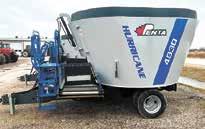

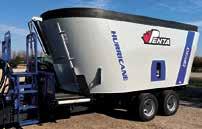

The results concluded that adding a processing facility on the farm would indeed be feasible. Now, the Stanleys must decide whether or not to make such a large investment.


“Dairy is tough right now; the (milk) price is so low,” Stanley said. “It’s a big pill to swallow to make a big investment with those kinds of margins.”
For now, Stanley and her husband are concentrating on making ice cream and realizing one of their main objectives — community outreach — by offering customers to visit their farm.
“Part of what we’re doing with the ice cream is farm tours that I do once a month,” Stanley said. “That’s one of my favorite parts, just sharing and answering questions that people have about milk and dairy, which was what one of our goals was — to promote agriculture and the dairy industry. Everyone loves ice cream, so it’s an easy in.”
Stanley said she hopes their efforts also keep their farm viable.
“It’s part of (Joel’s) heritage,” Stanley said. “It’s a struggle every day, and we talk a lot about if it’s worth it — if it is a struggle we want to pass on to the next generation — but we just take it one day at a time.”

The U.S. Department of Agriculture again lowered its milk production forecasts for 2023 and 2024 in its latest World Agriculture Supply and Demand Estimates based on “an expected decline in cow numbers reecting the average July 2023 cow number reported in the recent Milk Production report. The reduction in cow numbers is expected to continue through 2023 and into the rst half of 2024 as returns remain under pressure,” said the report.
Output-per-cow for 2023 was forecast to increase at a lower rate than previously expected on recent data and the expected impact of high temperatures during the summer. The forecast of milk per cow for 2024 was unchanged.
The 2023 production and marketings were estimated at 227.5 and 226.5 billion pounds, respectively, down 400 million pounds on both from a month ago. If realized, production would still be up 1 billion pounds, or 0.4%, from 2022.
The 2024 production and marketings were projected at 230.4 and 229.4 billion pounds, respectively, down 100 million pounds on both. If realized, 2024 production and marketings would be up 2.9 billion pounds, or 1.3%, from 2023.
Price forecasts for 2023 cheese, butter and whey were raised, based on current price strength, but nonfat dried milk was lowered. Cheese is expected to average $1.81 per pound in 2023, up 3.50 cents from last month’s estimate, and compares to $2.1122 in 2022 and $1.6755 in 2021. It’s expected to average $1.8450 per pound in 2024, up 9 cents from a month ago.
Butter will average $2.54 per pound in 2023, up 4.50 cents from last month’s projection, and compares to $2.8665 in 2022 and $1.7325 in 2021. It is projected to average $2.55 per pound in 2024, up 12 cents from last month’s estimate.
Nonfat dry milk was projected to average $1.16 per pound in 2023 and $1.09 in 2024. Dry whey was projected at 34.5 cents in 2023 and 31.50 cents in 2024.
Class III and Class IV milk price estimates were raised, reecting changes in their component values. Look for the 2023 Class III to average $17.35 per hundredweight, up 45 cents from last month’s estimate, and compares to $21.96 in 2022 and $17.08 in 2021. The 2024 projection is $17.55, up $1 from last month’s estimate.

The 2023 Class IV price will average $18.60, according to the report, up a dime from a month ago, and compares to $24.47 in 2022 and $16.09 in 2021. The 2024 Class IV will average $18, up 20 cents from last month’s estimate.
The U.S. corn outlook showed projected beginning stocks 5 million bushels lower based on mostly offsetting trade and corn used for ethanol changes.
Corn production was forecast at 15.1 billion bush-
els, up less than 1% from the previous forecast and up 10% from 2022. Yields are expected to average 173.8 bushels per acre, down 1.3 bushels from the previous forecast but up 0.5 bushel from last year. Total planted area, at 94.9 million acres, is up 1% from the previous estimate and up 7% from a year ago. Area harvested was forecast at 87.1 million acres, up 1% from the previous forecast and up 10% from a year ago. The season-average corn price was unchanged at $4.90 per bushel.
Soybean production was forecast at 4.15 billion bushels, down 1% from last month’s estimate and down 3% from 2022. Yields are expected to average 50.1 bushels per acre, down 0.8 bushel from the last forecast but up 0.6 bushel from 2022. Total planted area, at 83.6 million acres, is up less than 1% from the previous estimate but down 4% a year ago. Area harvested was forecast at 82.8 million acres, up less than 1% from last month’s forecast but down 4% from a year ago. The season-average soybean price was forecast at $12.90 per bushel, up 20 cents from last month. Soybean meal was unchanged at $380 a short ton.
Meanwhile, the latest Crop Progress report showed 97% of U.S. corn in the dough stage, as of the week ending Sept. 10, up from 93% the previous week and 2% ahead of a year ago. 82% was dented, up from 67% the previous week and 7% ahead of a year ago. 34% was rated mature, up from 24% a year ago and 6% ahead of the average. 5% has been harvested. 52% was rated good to excellent, down 1% from the previous week and 1% below a year ago.
Looking at soybeans, 31% were dropping leaves, up from 16% the previous week, 11% ahead of a year ago and 6% ahead of the average. 52% were rated good to excellent, down 1% from the previous week and 4% below a year ago.
The week ending Sept. 2 saw 57,600 cows go to slaughter, down 1,600 from the previous week but 2,000, or 3.6%, more than a year ago. Year-to-date, 2,040,600 head have been culled, up 110,600, or 5.4%, from a year ago.
The cheddar blocks alternated some the week of Sept. 11 but fell to a $1.88 per pound close Friday as traders anticipated Monday afternoon’s August Milk Production report. The blocks were down 4.50 cents on the week, lowest CME price since July 27, and 18 cents below that week a year ago when they were trading at $2.06 per pound. Class III futures have fallen as well.
The barrels closed Friday at $1.81, down 1.75 cents on the week, 28 cents below a year ago when they were up almost 16 cents to $2.09, and were 7 cents below the blocks. There were 15 loads of block traded on the week and six of barrel.
StoneX reports that the milk supply is tighter, but there’s a bleak view on demand ahead. The lack of cheese exports makes market direction uncertain.
Midwest cheesemakers said milk was still some-
what snug this week, according to Dairy Market News, but near-term expectations are that availability will grow with improved cow-comfort weather. Spot milk prices were still above Class III but have edged lower. Cheese orders are somewhat steady but varies plant to plant. Some remain concerned about fullling incoming orders while others say tighter milk has brought some balance in cheese inventories.
Retail and food service cheese demand in the West remains steady. Demand from international purchasers is moderate but has been consistent from Latin American buyers the rst three quarters of 2023. Handlers report that Class III milk demand from cheese manufacturers is strong, and cheesemakers said milk supplies are in comfortable balance with processing capacity, said DMN.
Butter climbed to $2.7725 per pound Wednesday, highest since Dec. 16, 2022, but closed the week at $2.7175, 3.75 cents higher and 41.50 cents below a year ago when it was still above $3. There were 33 sales on the week.
Midwest butter makers say cream tightened this week. Cream multiples have begun to edge nearer to 1.30 for butter processors. Churning is somewhat active with the adequate cream supply, but contacts are less certain near-term, as milk output in the Upper Midwest is expected to grow with cooler temperatures.
Cream is tight in the West, and many believe it will remain so near-term. Slightly lower cream multiples were reported at the top of the range this week, attracting more spot buyers. Some manufacturers are running steady production while others said output is less than anticipated due to current cream volumes. Retail and food service demand is strong to steady, while exports moderate to lighter.
Grade A nonfat dry milk nished Friday at $1.1125 per pound, up 1.25 cents on the week but 45.75 cents below a year ago, with 12 sales reported. Dry whey closed Friday at 30 cents per pound, down a quarter-cent on the week and 16 cents below a year ago, with 13 sales for the week at the CME.
StoneX said there are a few more bullish factors supporting the whey market than a couple months ago, such as tightening milk supplies, rming domestic demand and greater strength in whey protein concentrate markets diverting protein out of dry whey. China’s smaller purchases are a drag on the market.
The July U.S. Dairy Supply and Utilization report this week pulled back the curtain a bit. HighGround Dairy economist Betty Berning noted the strong domestic use in the Sept. 18 Dairy Radio Now broadcast. She said the July export data had a lot of red in it, but the DSU showed domestic cheese, butter and powder disappearance was up from a year ago and cited dry whey as an example. Dry whey exports were
down nearly 43% in July, she said, while domestic whey disappearance was up 47%, leaving total utilization at.
Total cheese consumption was up 2.5% from a year ago, thanks to a 2.8% gain in domestic utilization, particularly of American cheese, said HGD, which offset the minor decline in other-cheese domestic use. Total cheese exports were slightly below 2022 volumes.
Butter utilization was up 2.4%, despite a 61.2% decline in exports. Nonfat-skim milk powder disappearance was up 5.3%, mainly due to an 11.1% increase in domestic use, while exports were up a welcome 2.8%.
Will domestic demand remain strong? Berning said that’s a good question that no one can answer. While U.S. consumers are struggling nancially, milk, butter and cheese are “necessities for most families, so demand for those products might remain at or increase as families eat more meals at home.” Berning warned, however, that dairy may lose on restaurant demand in the way of fancy cheeses and ice creams, “those nice to have, not need to have items.”
She also pointed to consumer data. The August Consumer Price Index was up 0.6% from July on a seasonally adjusted basis, the fastest month-on-month clip since June 2022, according to the Sept. 13 Daily Dairy Report.
“Compared to August 2022, the CPI grew 3.7%, notable because the year-on-year comparison had been decreasing since June 2022,” the DDR said. “Equally noteworthy, last summer the CPI was increasing on a year-over-year basis at rates not seen since the early 1980s. The fact that 2023’s CPI’s gures have grown against 2022’s big numbers indicated consumers’ struggles have continued.”
Tuesday’s GDT Pulse saw 2.1 million pounds of Fonterra whole milk powder sold, down from 2.2 million in the Aug. 29 Pulse, and at $2,655 per metric ton, up $205 from the last Pulse (8.4%) and up $25 from last week’s GDT.



“With 37 participants, this was the largest turnout for the Pulse since August 2022 as the rise in the C2 Regular WMP price drove more buyers to the platform,” HGD said. “However, with only 12 winning bidders and less than 100% sold, it is clear that uncertain macroeconomic inuences continue to weigh on market sentiment while overall global demand remains weak.”












Cooperatives Working Together member cooperatives accepted 12 offers of export assistance this week that helped them capture sales of 351,000 pounds of American-type cheese, 7.1 million pounds of whole milk powder and 529,000 pounds of cream cheese. The product is going to customers in Asia, Central America, the Caribbean, Middle East-North Africa and South America through March 2023.

In politics, the USDA announced this week that it will provide nancial assistance to dairy farmers affected by natural disasters. The National Milk Producers Federation praised the action. NMPF said, “The Milk Loss Assistance program will compensate eligible dairy farms and processors for milk dumped due to qualifying disaster events in 2020, 2021 and 2022, including droughts, wildres, hurricanes, oods, derechos, excessive heat, winter storms and smoke exposure.”


NMPF president and CEO Jim Mulhern said, “On top of the challenges created by wild price gyrations and the COVID-19 pandemic, dairy farmers since 2020 have also faced an inadequate federal mechanism for addressing unforeseen weather catastrophes, further straining nances at a time when strains have been hard to bear. NMPF never accepted that situation, and we’re very appreciative of USDA’s diligent work over several months to nalize the compensation plan that will address this backlog of disaster assistance.”
Lawmakers in Washington, D.C., were told this week that limiting full-fat dairy is no longer science-




based. Roberta Wagner, senior vice president for regulatory and scientic affairs with the International Dairy Foods Association, provided oral testimony to the 2025 Dietary Guidelines Advisory Committee, a panel of 20 nutrition and public health experts tasked with providing a scientic report to inform the federal government’s next update to the Dietary Guidelines for Americans.
In her testimony, Wagner stressed that 90% of Americans do not consume enough dairy to meet dietary recommendations, according to the 2020-25 DGA report. She urged the committee to “maintain nutrient-rich dairy foods as a central part of a healthy diet,” and stressed that “new science shows that limiting dairy based on fat level, as current guidelines recommend, does not lead to better health outcomes.”
She said that “an overwhelming body of scientic evidence demonstrates that dairy should be part of healthy eating patterns for all Americans, at all life stages and with various dietary needs.”

The DGA have long recognized the inherent benets of dairy products, including milk, yogurt and cheese, as important sources of nutrients and associated with better health outcomes,” Wagner said. “At a time when people are not meeting DGA recommendations for dairy, deterring intake due to fat level is not science-based nor is it in the best interest of public health.”
NMPF’s Regulatory Affairs Director Miquela Hanselman along with an Olympic athlete and dairy farmer Elle St. Pierre also testied at the DGA, stating that dairy is a critical component of diet that should be considered in light of its full range of benets.
















My wife, Carla, and I just got back from a 2,800-mile motorcycle road trip through the Ozark mountains in Northern Arkansas and Southern Missouri. This allowed us to travel through Central and Western Iowa, Missouri, Minnesota, and Eastern Kansas. NW Missouri and SW Iowa had the best crops of the entire trip. The rest of the crops looked OK but had variable visual signs of dry stress.
The highlight of our trip was a visit to Fort Leonard Wood, Missouri where I did my military training. It was a very emotional experience that left both Carla and I full of pride. There were several groups of new graduates spending time with their families on and off base. It was awesome seeing these brave young men and women walking with pride in their achievements and ready serve our country.
Silage harvest reports are variable depending on location. Yield tonnages are surprising everyone given the dry finish to the crop. Although tonnage is down slightly in some locations, we continue to hear of record high tonnages in others.
USDA dropped its national average corn yield estimate in its recent WASDE report to 173.8 bushels per acre. Planted acres were raised to 94.9 million. If you use
FSA reported acre data to project final planted corn acres, it appears that USDA may have to add another 1 million acres to its estimate at some point. This pretty much ensures that carryout stocks for the soon to be harvested corn crop will comfortably exceed two billion bushels. This will keep corn prices under pressure until demand improves or production problems impact SA or next year’s U.S. crop.

The milk market has felt a little softer in recent weeks. In general, it appears that cooler temps in the Midwest is helping milk flows. Spot milk loads continue to trade at a premium to Class III due to milk production declining throughout the summer, which has allowed processors to have open processing space in production schedules.





Spot CME Group cheddar cheese prices have softened in recent sessions allowing barrels to trade back into the mid $1.70’s. This is bringing back $17ish Class III values on the futures. Block cheddar prices have been fading after posting the mid-August high over $2.00. EU and NZ cheddar cheese is trading in the $1.80’s as the world values arbitrage to a par relationship. Cheese prices will likely be sensitive to NZ new production season milk flows.




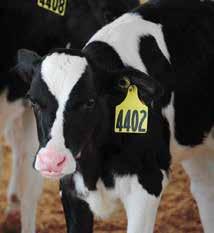










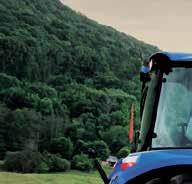
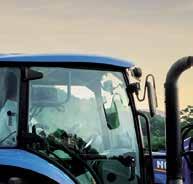





Fall is here, and at harvest time, quality counts, from the crops themselves to the equipment you’re using to bring them in. Fendt ® Vario ® high-horsepower tractors are the bold choice, from their brilliant engineering to their unbeatable performance. Expertly designed with serious farmers like you in mind, the Vario lineup marries incredible power with superior fuel economy and cutting-edge technology. The result? A lineup of tractors that just get the job done better, faster and easier. Come see for yourself when you stop in to Ziegler Ag Equipment to learn more about the Fendt Vario tractor and see the full Fendt lineup.


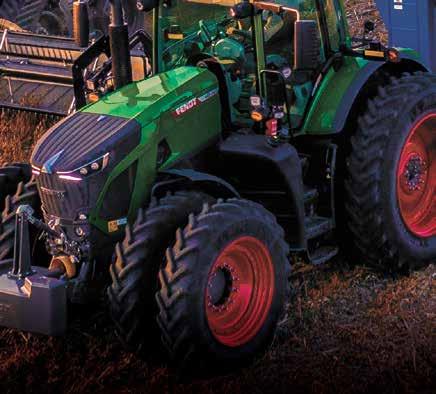
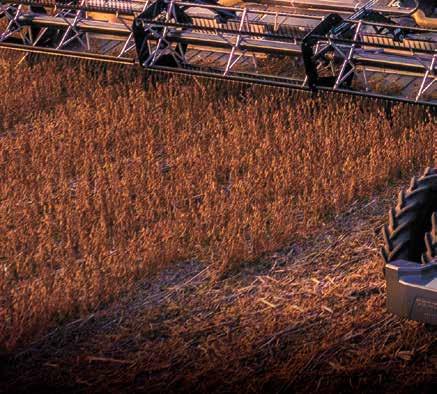







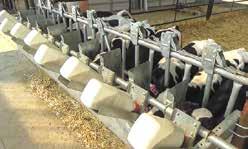
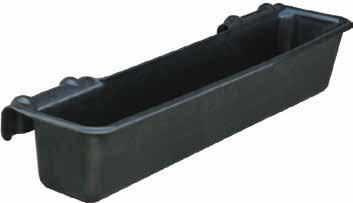


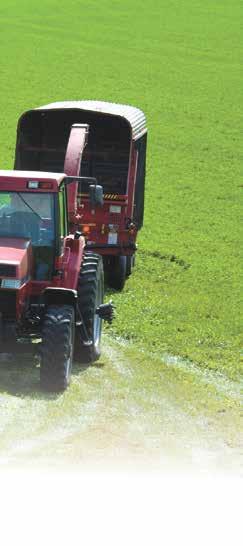



Margie Nauman offers a bucket of warm water at about 8:30 a.m. to a Jersey heifer that calved earlier that morning, Sept. 11, near Marsheld, Wisconsin. The Naumans milk 12 registered Jerseys.
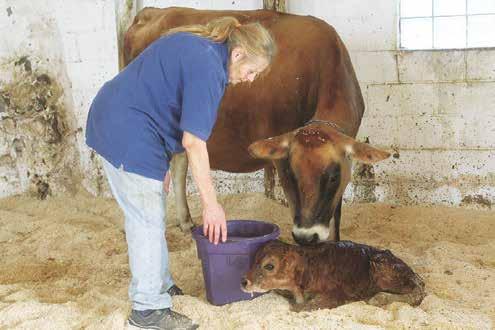

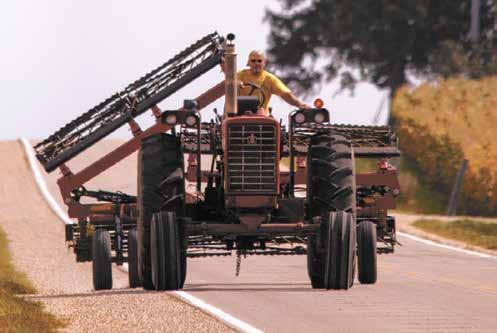
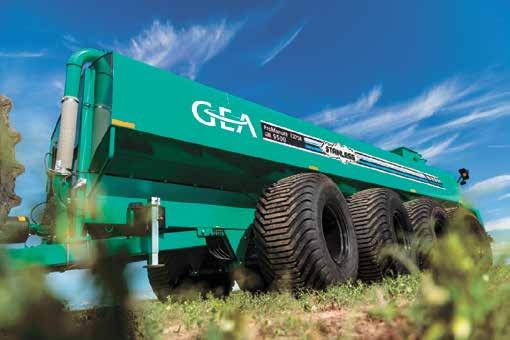
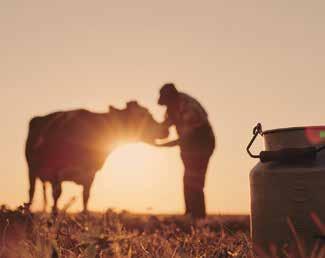




















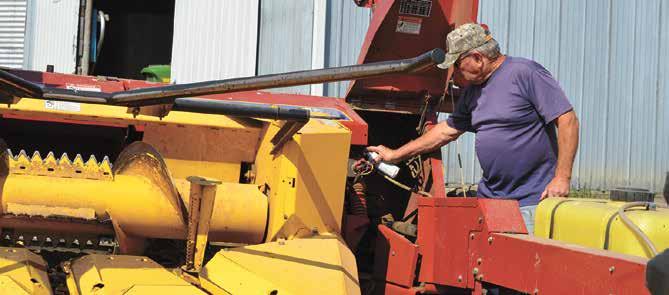


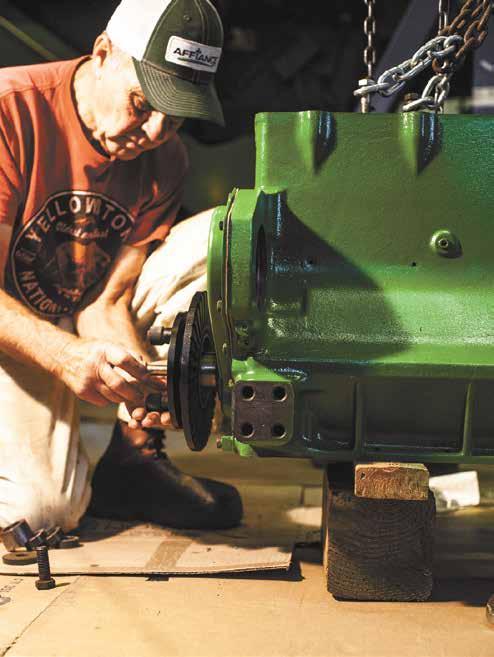






























































































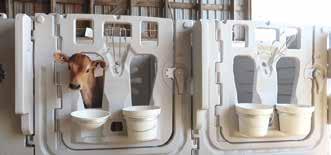

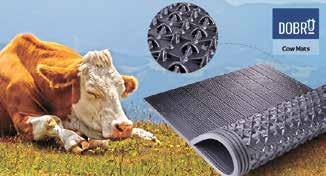


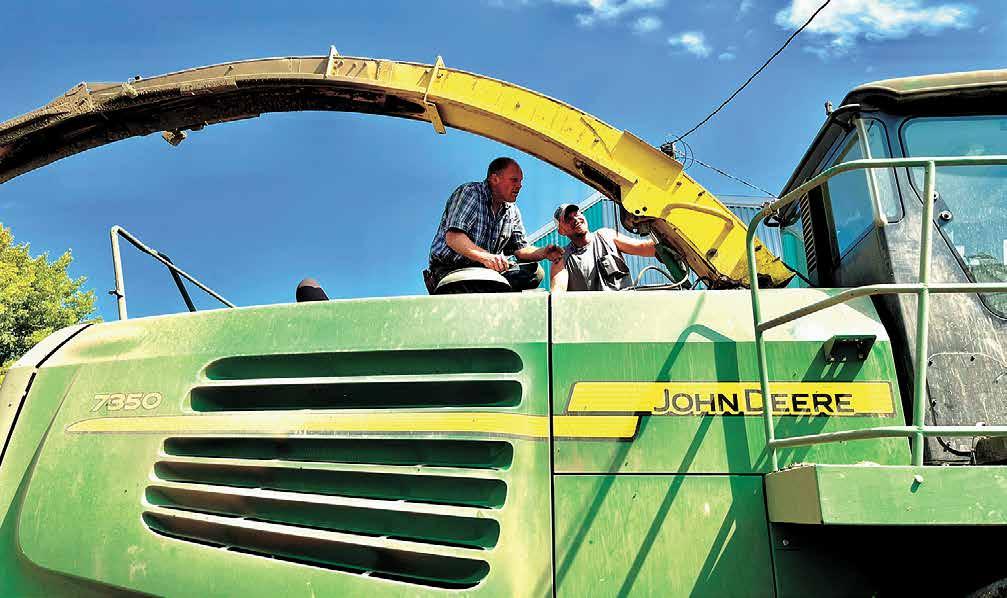
Herdsman Paul Lacey drives the tractor and mixer through the barn a�er running off feed around 4:20 p.m. Sept. 12 at Redalen Holsteins near Fountain, Minnesota, where Lacey has worked for about 20 years. Mike Redalen also employs Amy Means full �me and two high school students part �me and receives addi�onal help from his son, Lucas, and Lacey’s two sons, Beau and Cole, to milk 200 cows on three robots and raise most of the feed needed on 600 acres.







Jayden
�eld feeds a calf milk at 5 p.m. Sept. 13 on his parents’, Ashley and Cory Nie�eld, farm near Greenwald, Minnesota. Jayden was joined in the barn by his two brothers, Owen and Logan, and Ashley, who was milking. The Nietfelds have been milking cows on the farm for the last 11 years.
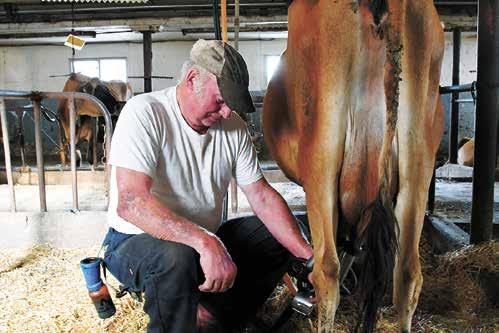
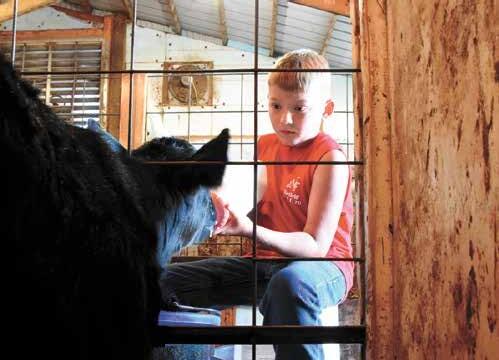
one of a different breed, works several days a week at Rock Dell Creamery, and hauls ca�le once or twice a week as loads are available.
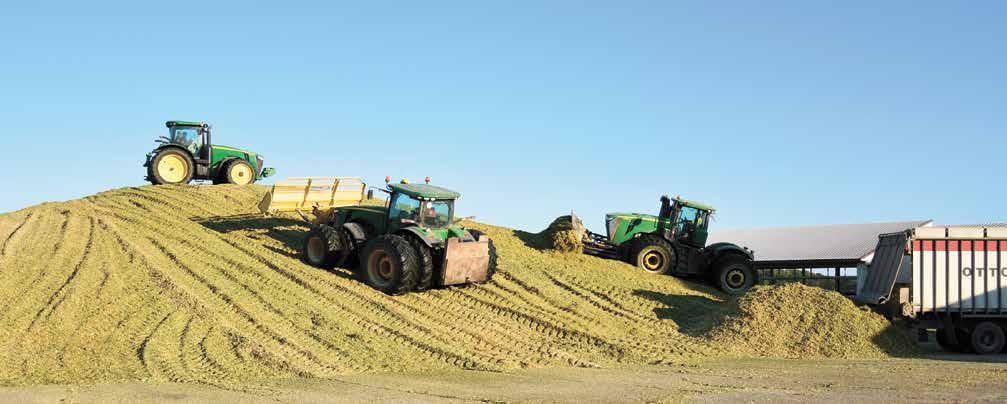



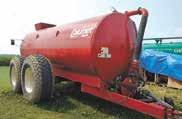

(le







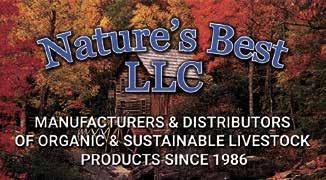 By Abby Wiedmeyer abby.w@dairystar.com
By Abby Wiedmeyer abby.w@dairystar.com

BLACK RIVER
FALLS, Wis. — Jerry and Shirley Wagner have been milking cows for many years, and as the dairy industry changes, they adapt with it in their own way.
Jerry and Shirley milk
60 cows along with their son Brandon and his ancée, Jesse Kettledon, at their dairy farm, Milking Shorthorns, near Black River Falls. The farm has been organic since 1992, and this year the family switched to milking their cows once a day.
“There were some bonuses and a little less milk,” Brandon said. “It wasn’t a bad thing by any means.”
The inspiration for oncea-day milking came when Brandon attended a grazing seminar. After learning that one-third of the dairy farms in New Zealand only milk once a day, Jerry and Shirley hopped on board. The benets surpassed their expectations even with the hot, dry season they have experienced this year, Brandon said.
They rst cut down to once-a-day milking in February of this year, and Jerry said there was an initial drop
in milk production but a simultaneous increase in components. There was also an initial increase in somatic cell count, but Jerry said the SCC issue was easily cured by post dipping with iodine.
“Those cows probably had SCC issues before, but because we were milking twice a day, it wasn’t as bad,” Jerry said. “Once it straightened out, we actually got a lower cell count than before we made the switch.”
The family also noticed their electric bill went down by $200 because they are not running the vacuum pump as often. Additionally, they are able to milk the cows in the cool, morning hours, keeping the parlor fans off.

Milking time is adjusted according to the heat in the summer and the sunrise in the winter.

The herd of Milking Shorthorns is bull bred, with two calving seasons per year. Cows are bred to have calves in the spring and fall to avoid wintertime calving. The biggest calving is in spring, and calves are left with the cows full time. As the year progresses, calves are separated over the night and put back with the cows after milking in the morning.




Cows are grazed intensively and fed a total mixed ration once a day, at night. The TMR consists of hay with a mineral mix that includes minimal corn. The family agreed that their next change on the farm is probably going to be to eliminate the TMR altogether since fuel prices continue to rise and they do not feed enough grain to justify the extra equipment any longer.
Even with the drought conditions they have been experiencing, the cows have held steady with production around 35-40 pounds per day. The family is also pleased with the body condition of the animals and credits their high-quality feed for the herd’s optimal health. Jerry has been producing his own compost for over 20 years, which adds sugar and energy to the hay test, he said.
“The high calcium lime in the compost builds sugars in the hay,” Jerry said. “It creates triple the energy.”

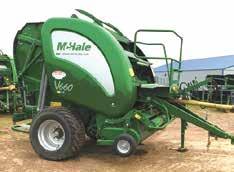
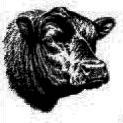

Since Brandon and Jessie have taken over milking, Shirley has used her time to direct market farm products to consumers. Having previously sold beef, pork and chicken at the farmers market in Black River Falls,




she has now expanded to an on-farm store and added a food truck as well.

“We believe in organic, and we believe in good quality meat,” Shirley said. “People just need to get back to basics.”
Shirley operates with the help of her daughter, Holly Meimann. When cooking burgers at the farmers market, Shirley uses products from the other vendors at the market as well, to help promote the consumption of local food. A freezer in the food trailer allows Shirley to sell frozen meat products to people at the market.
In the store, other local products are available along with Wagner Family Meats. As patrons of Westby Cooperative Creamery, the Wagners have the creamery’s products available along with other local products from Wisconsin.

The direct marketing business is in its second year, and Jerry and Shirley agreed that it is more protable than selling wholesale.

“Most farmers are buying at retail and selling at wholesale, and that doesn’t work,” Jerry said. “You can farm a lot smaller if you sell right to the mouth.”
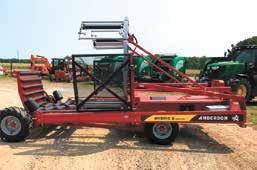
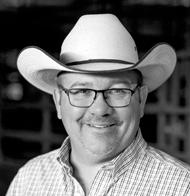
“We believe in organic, and we believe in good quality meat. People just need to get back to basics.”
SHIRLEY WAGNER, DAIRY FARMER
ANDREW INGVALSON



175 cows, 600 acres
We finished all the chopping a couple days ago. I work with a group of five dairy farmers who help each other with corn silage harvest. We finished on my dairy two weeks ago. We did around 35,000 tons. The chopping in the area is winding down. Up next, I will either do highmoisture corn or haul manure. The moisture on the corn varies from the high 20s to 45 in percentage. I like to do ours at around 28% to 30%. We try to do around 15,000 bushels. I haven’t seen any soybeans harvested yet.




ARIANN DOE
250 cows, 5,530 acres
We have about 500 acres of durum left. It’s been slow because the grain is lodged. It’s a very good crop, but we can’t harvest quickly. Plus, we had our compressors go down on our milk tank, so we couldn’t be in the field. We are also working on second-crop hay. Most farmers are really pushing to get it done before Sept. 21 when it’s supposed to rain. Our corn is very green yet. We were near Dickinson, North Dakota, and we didn’t see anyone chopping there yet. The sunflowers are still standing in the field as well.
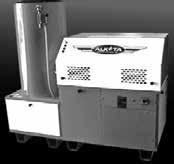

ALAN VANNURDEN

600 cows, 1,400 acres

We have two more days of corn silage that we are doing for our heifers. The corn silage for the cows is done. We finished last night (Sept. 18) and did over 600 acres. The corn was 10-12 inches tall on the irrigated fields and low parts of some of our other fields. The rest was quite a bit shorter. We are also doing fourth-cutting hay and third-cutting on the new seeding. All of this is under irrigation, so the stand is good. We chop it all and put it in a bunker. Most neighbors are done with chopping, and one started soybeans. I had to go to Worthington this week and saw farmers combining corn and soybeans. We plan to start hauling manure next.
BENJAMIN SEIFERT
350 cows, 450 acres
We are chopping fifth-cutting hay today (Sept. 19). It looks like a decent crop. We have 150 acres to do. We cut it yesterday with a 15-foot mower; then we merged it together with a twinrow merger this morning. I’m not sure when we are going to start silage; the ears look pretty good, but the corn isn’t denting. Most of the chopping in the area is done. There are farmers in the area working on either dry corn, soybeans or highmoisture corn.
RAINFALL TOTALS
Last 2 Weeks
0.8”


Since April 1 10.7”





We have combined some of our corn. It came out of the field at 15% moisture and yielded 130 bushels per acre. We are pretty happy with that considering how hot and dry it was this past summer. Our soybeans aren’t ready to harvest quite yet. The cows are really liking this weather with the cool nights and the more moderate daytime temperatures.
CHARLIE DICKE

200 cows, 850 acres
We chopped corn silage on Sept. 12. We had below-average yields with about 2324 tons per acre, but most of it was good moisture at 66% to 67%. We chopped some corn we had not planned on chopping because of the low yields. Now, we have the liquid manure tanked already and are doing the solids. Most of our cover crops are in. In the area, there is still some corn silage chopping to be done, and a few people are doing beans.








LANE HETTINGA
130 cows, 75 acres
Silage chopping is wrapping up; there are only a few farmers in our area who are still at it. Some farmers have shifted to making earlage. There are a few fields of soybeans that have been harvested, but there are also some fields that are pretty green. Our neighbors say that they plan to start harvesting high-moisture corn in the next few days. We received a half-inch of rain last week, but 1.75 inches of rain fell just a few miles away.
DOUG FAIRBANKS
380 cows, 600 acres
We got two rain occurrences these past two weeks. I have been doing a little bit of manure hauling and fall tillage. In a couple of weeks, we will begin taking out corn and soybeans. In the area, a little bit of corn and soybeans have come out. There are people who are worried that the stalks on the corn are not strong enough to stay up because of the drought.
RICH HOUZNER





54 cows, 600 acres
We have one more silo to go for chopping corn; it’s a 20- by 85-foot silo, and it’s empty. It’ll take 100 loads. It’s been fast and furious — one upside of no rain is there’s no delays. At this point, some rain might help pastures or hayfields, but now, all the rain is going to do is impede your progress. We are hoping to switch to snaplage next week if we get this corn done. We will start filling silos with that and keep on. It’s been a strange year for sure. We’re culling cows a little heavier because the feed is not there and the price for beef is high.

230 cows, 400 acres
We started chopping corn silage Sept. 18 and wrapped up a couple days later. The corn silage is not bad for how dry we were — I am pleasantly surprised. It’s not quite as good as normal, but it’s still surprisingly good. A lot of people are chopping in our area right now. This year, it seemed like everyone was going all at once. Next week, I’m hoping to get manure out.
MATT REDETZKE




250 cows, 450 acres

We are waiting for our corn to be ready to chop. We checked it the other day, and it is still at 70% moisture, so I figure we are at least five to seven days away from chopping yet. The corn looks amazingly good. It is going off the heavy dews we have been getting. I am hoping we’ll get somewhere around 20 tons per acre but won’t know for sure until we get out there in the field. The soybeans look pretty good. They still have about half their leaves.
100 cows.
1,400 acres



We are very slowly getting into chopping in the areas that didn’t get that rain. The corn was about ready to go, and then it gained back points after that rain. The soybeans are changing fast. They will be ready sooner than people would expect. If we get a killing frost here soon, that will cause some problems for us. I was over on the west side of the state this weekend, and they were about done with their silage. They are way ahead of us.
TIM VOSBERG
140 cows, 380 acres

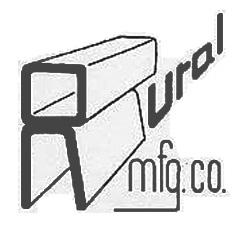
We got done chopping corn yesterday (Sept. 18), and it was a little variable out there. Some of it was fantastic, but some of the population was not very good where it was not planted very deep. The corn that was planted 4 inches deep all came in good. We estimated some at 250 bushels to the acre, which was our best. Our poorest was 168 bushels to the acre. Some conventional corn in the area is still getting chopped. Custom operators are working on the corn that came up after the rye. Beans look good in the fields, but we’ll see. We will probably get at them in late October.
ALAN AINGER



300 cows, 1,100 acres

We have fifth-crop hay to do. Some of it looks good, but some of it is short. You expect that with fifth crop though. I think with the rain we’ve had and the heat we have coming here, that will increase our yield a little bit. I hope to cut that in the next week. We’re planning to start high-moisture corn any day as soon as the weather dries out. After that, we’ll do soybeans and the remaining corn that’s not high moisture.




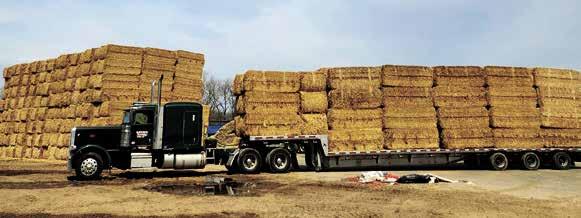

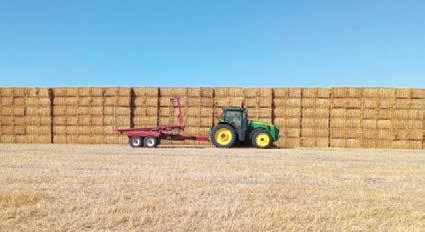














 By Abby Wiedmeyer abby.w@dairystar.com
By Abby Wiedmeyer abby.w@dairystar.com
ELROY, Wis. — It was Memorial Day this year when Kris Weber was trying to nish the last 10 loads of haylage before going on a picnic with his family.
He was chopping with a pull-type chopper in a eld that sat in a valley. He had just switched wagons with his son Chase when he saw that he missed a small amount of hay in the corner of the eld. He drove over to it with the intention of chopping the little pile before heading to the next windrow.
Meanwhile, Chase was pulling the full load up the hill to go unload at the farm. He was just about to the top of the steep valley when the quick hitch failed and the full wagon went rolling down the hill, straight toward his father.
Kris did not see the wagon until the last second.
“I just about got to that little wad of hay and I glanced up and here’s a wagon coming,” Kris said. “I went for the brakes and it hit me that quick.”
Chase had felt the wagon let go and immediately put the tractor in reverse to try and catch the wagon. He almost caught it, but the full wagon picked up speed so fast that he could not catch it in time. The wagon had 40 acres of wide-open space that it could


have traveled to, but it ended up crashing into the one spot that Kris occupied.
“It was 400 yards up the ridge where he lost it to where it came back down and got me,” Kris said. “It had to be going 40 miles an hour. I just remember hearing glass break, and that’s all I remember until I heard Chase calling at me.”
Chase’s girlfriend was riding with him at the time, and she ran up the hill to where she could get cell phone reception to call for help while Chase drove down to his father. He thought his father was dead when he came to the tractor and saw him draped across the steering wheel with his feet on the toolbox.
Chase was able to wake up Kris and help him off the tractor. He also searched for Kris’ glasses and found them 30 feet away in the woods. Kris was able to walk to the side hill and sit down to regain composure.
Once the ambulance and re department arrived, Kris was taken into the hospital for an exam. He suffered a concussion and was incredibly sore, but nothing seemed to be broken, so he was sent home.
Kris’ brother Kip came to nish chopping the hay that day.
A month later, Kris’ shoulder was still sore, and he was unable to lift his arm above his shoulder. An MRI indicated that two tendons were torn away from his shoulder, and his rotator cuff had several tears in it. He is scheduled for surgery in December.
While the family is grateful that more harm was not done to any peo-


ple, it is unfortunate that the tractor that was hit had sentimental value. Kris had purchased the John Deere 8410 from his mother when his father passed away. The estimate to repair the machine was $87,000. The Webers were able to use insurance money to replace the tractor, but it took a week to nd one, which put them behind with the hay.
The incident had the family shook up for a while, especially Chase, who had to witness the entire thing. Kris’ wife Lori called it a freak accident. Kris agreed.
“That wagon could have gone a million different directions and it came right at me,” Kris said. “You couldn’t unhook a wagon and aim for that spot if you tried.”
“That wagon could have gone a million different directions and it came right at me. You couldn’t unhook a wagon and aim for that spot if you tried.”
KRIS WEBER, DAIRY FARMER
Coverage off the field







In September 2018, Greg and Gary Sabolik found a unique way to get their silage pile covered. They had chopped 270 acres of corn for silage to feed their 280 cows at Bread and Butter Dairy near Kensington, Minnesota. The Saboliks invited the West Central Area-Ashby High School football team to help cover the pile in exchange for pizza and two stock tanks the team could use during the season for ice baths. The team practiced in the early morning Sept. 12 so that they could head to the Saboliks’ farm after school. The Saboliks said the task of covering the pile went smoothly with so many bodies helping. Team quarterback, Isaiah Sykora, said working together to complete the job made for good team bonding.





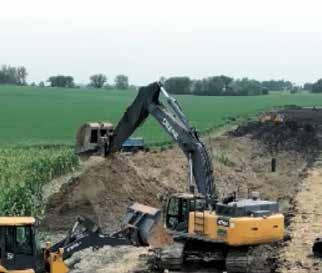
De Groots receive state award for environmental stewardship





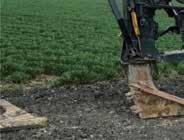

Daryl and Marla De Groot received the 2018 Iowa Farm Environmental Leader Award during the Iowa State Fair in Des Moines. The De Groots’ dairy farm, Donjan Swiss, was home to 250 head of mostly Holsteins with around
40-50 Brown Swiss. The couple had implemented numerous soil conservation practices on their 445-acre farm, including the use of terraces and grassed waterways. The De Groots had also been utilizing cover crops as well as no-till farming methods. Iowa dignitaries on hand at the state fair to give the De Groots their award included Gov. Kim Reynolds and Secretary of Agriculture Mike Naig.
Dimock Cheese in Dimock, South Dakota, entered fall of 2018 in construction mode as its new facility was slated to be completed by winter. The 8,000-square-foot building being erected would be an upgrade for the company, which was at the time operating entirely in its 87-year-old original structure across town from the construction site. The new facility was slated to provide better product safety and security while allowing for more packaging, labeling, refrigeration and retail space. Cheese would be processed at the original location, which was using about 70,000 pounds of milk per week. Turn to A LOOK BACK | Page 29
In the fall of 2018, Robert Pierce was milking 35 cows on his family’s 165-acre farm near Darlington, Wisconsin, but he was also performing archeology. Pierce had honed his ability to discern the tiniest pieces and fragments on the ground, noticing subtle variations in colors, shapes and sizes that meant the difference between ordinary rocks and something left behind by nomadic cultures. He had already accumulated numerous Madison points, which are a type of arrow point that were made about 500 years ago. He had also found spear heads 8,000 to 9,000 years old. The most ancient artifact Pierce found was a Paleo ake knife he estimated to be up to 10,000 years old. Pierce said his farm had never been surveyed archaeologically but was on land conducive to nomadic campsites, having running streams and fresh-water springs as well as west-facing hills.



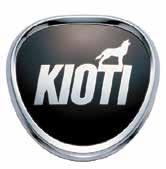


Kemps caught employees by surprise at its processing plant, Franklin Foods, when it announced in the fall of 2013 that it would close the Duluth, Minnesota, site Oct. 4. This meant 38 people would lose their jobs. The remaining 25 would remain at a Kemps distribution facility in the Duluth area. Kemps said in an announcement Sept. 16 that the closing would have no effect on the northern Minnesota producers who were supplying milk to facility. Franklin Foods had been in operation since 1982 as a joint venture between Kemps and Associated Milk Producers Inc., with Kemps running the plant and AMPI supplying the milk. In its announcement, Kemps cited the erosion of milk consumption as the reason it needed to close one processing plant of its ve.
When classes began in 2013 at Ridgewater College in Willmar, Minnesota, students in the agriculture and veterinary technical programs walked into brand-new facilities. Additional and updated computer labs, two agronomy classrooms, a grow room, a modernized dairy classroom, an improved dairy lab, and two shop classrooms were waiting for learning to happen there. The dairy room now had a smartboard and Apple TV that
would allow instructors to hook up an iPad and use dairy apps or demonstrate concepts using pictures taken on farm tours and projecting them on the screen. Since the dairy lab now had a full garage, instructors could bring in equipment and dairy animals. As the school year began, the agriculture department was ready to welcome nearly 236 students, 47 of them being dairy students.
When Tom and Linda Sammon spotted dirt around the base of their silo the morning of Sept. 14, 2003, they did not give it much thought. By that evening when they were milking in their 42-stall barn near Faribault, Minnesota, the noises they heard caused them to take another look. The creaks and cracks were the beginning of the end for their 20- by 70-foot Madison silo. The cement base was starting to crumble. The couple had nished lling the silo with corn silage the week before, and they estimated it and its contents now weighed 700 tons. By Sept. 18, the Sammons had moved their 80 cows out of the barn to be milked and housed at two farm sites because the silo’s shifting was making its nal resting place uncertain. After shutting off utilities in the barn, all the Sammons could do was wait. At 10 p.m. Sept. 20, the silo fell, destroying the north end of the barn and compromising the rest. The Sammons were left with no answers, trying to decide their next steps.

Dr. Scott Josephson, a veterinarian with the Tri-County Veterinary Clinic in Minneota, Minnesota, talked with Dairy Star in September 2003 about the signicant growth in number of embryo transfers in dairy animals. He said articial insemination had allowed for the improvement of male genetics, but ET was now allowing for the extended use of female genetics to preserve that genetic material. Ten years before, Josephson had taken an advanced reproductive course. Josephson worked to expand his expertise, and a decade later in 2003, Josephson estimated that, by the end of the year, he and his two technicians would have handled more than 2,000 embryos with close to 200 cows being ushed, and he said the clinic would have the capability to process 100 recipient cows in a day.

Hay sales starts at 12:30 p.m. and are the 1st and 3rd Thursdays of the months of September through May.
October 5, 2023
October 19, 2023
For more information, contact Kevin Winter 320-352-3803, (c) 320-760-1593 or Al Wessel at 320-547-2206, (c) 320-760-2979

From the kitchen of Aimee Muehring of Sheboygan Falls, Wisconsin
1 pound ground pork

1 1/2 to 2 pounds ground beef or venison

1 box Stovetop stuffing of your choice, unprepared
1 can golden mushroom soup
2 eggs
Onion powder, minced garlic, and black pepper to taste (no salt)
Milk
Mix together; add milk at the end for desired consistency. Put in bread pans and bake at 350 degrees until meat reaches 165 degrees internal temperature.

From the kitchen of Aimee Muehring of Sheboygan Falls, Wisconsin
1 cup strawberries
1 cup frozen blueberries
1/2 cup applesauce
5 ounces Greek yogurt cup
Milk
Blend; add milk to desired consistency and thickness.


From the kitchen of Aimee Muehring of Sheboygan Falls, Wisconsin
15 eggs
1 1/2 cups ham cubed
1/2 cup diced onion
1/2 cup diced green pepper
1 pound diced hashbrowns
1/3 cup milk
1/3 cup sour cream
Season to taste with onion powder, black pepper, garlic powder, salt and paprika. Add shredded cheddar cheese to taste. Layer ham, hashbrowns, peppers and onions in greased 9-by-13 pan. Crack eggs into large mixing bowl. Season eggs; add sour cream and milk. Whisk until well blended. Pour 2/3 egg mixture over other ingredients. Add cheese; pour remaining egg over top. Bake at 350 degrees for 30-35 minutes.




Tuesday September 26, 2023 at 11:00am
Expecting 300-400 head! Call with your consignments!
Wednesday, September 27, 2023 at 11:00 am

COMPLETE HERD DISPERSAL
55 Holstein Dairy Cows, tie stall milked, cows will sell on test, averaging 82# 3.9BF 3.1P scc200. Cows will sell in all stages of lactation. Top cows milking 90-110# Many years AI breeding through Genex, all AI bred Angus. 50% of this herd is in the 1st & 2nd lactation. Coming from Jeff Brandl, Rosholt REPUTATION DAIRY CONSIGNMENTS
19 FANCY BROWN SWISS Dairy Cows, including (2)FANCY Springing Heifers due in Oct. Majority are REGISTERED. Cows are recent fresh 2 & 3 year olds, milked in a parlor, out on pasture. Cows will sell on test, not pushed with a herd tank average of 70# 4.3 BF 3.6P, with many records over 30,000#! AI over 50 years. Overstocked dairy! This is a 3rd generation farm that has a history of the TOP production Brown Swiss herds in the state! Coming from Breezy Haven Dairy, Bloomer WI
SPRINGING HEIFERS
26 Holstein Springing Heifers. Headlock adapted. SUPREME quality. Over 40 years of AI breeding through Select Sires, sires & service sires include Hurricane, Spyker, Tommy, Passat, Biggelo, Triumph, Captivate, Playoff P, Rager Red and more. Full vaccination program. Owner sold his excellent dairy herd at Premier Livestock and is now selling his heifers. Coming from Mark Chamberlain, Pine Island MN
Thursday, September 28th at 10:00 am!
Accepting Sheep and Goats 5-8:30pm Wednesday evening. Have all sheep and goats in by 9:00am Thursday morning!
Wednesday, October 4, 2023 at 11:00 am
COMPLETE HERD DISPERSAL
200 Dairy Cows. Herd includes Holstein, Jersey Cross, Swiss Cross and Blue Roan Cows. Milked in parlor, housed in sand bedded freestalls. Cows are not pushed, on home grown feed, avg. 60# Young herd with approx. 140 cows in their 1st & 2nd lactation. Vaccination program. Buffalo County
Friday, November 3, 2023



BUY IT NOW - SELL IT NOW
See our website for our Buy It Now inventory!
$2,200-2,700. Good Quality Holstein Dairy Cows $1,575-2,175. Lower Quality Holstein Dairy Cows $1,550 and down. Top quality Holstein Springing Heifers. $1,7002,300. Last Friday we sold an excellent herd of 420 Holstein parlor/freestall dairy cows and springing heifers that averaged $2,200 straight through!!! Hundreds of top cows $2,700-3,100. Over 80 heifers 5-8 months bred, avg $2,400!!!! Great herd and an extremely high market!! We appreciate all of our livestock truckers, consignors, bidders, and buyers! Thank you for choosing Premier Livestock to sell and buy your cattle!

‘17 Gehl RT250, ISO/Dual H-Ctrls, Dsl, Camso Tracks HXD 450x86x58, Both Standard And Hi-Flow Hyd, 2 Spd, Hydra Glide, 295 hrs, Warranty Till 6-30-26 Or 1000 Hrs ........................................$48,500


‘22 Gehl R165, T-Bar Ctrls, Dsl, 1800 Lift Cap, C&H, 2 Spd, 3,410 hrs ...........$33,900
‘22 Gehl RT215, ISO/JS ctrls, dsl, square bar

‘19 Manitou 2200R, ISO Ctrls, Dsl, 2200


Lift Cap, C/H/A, 2 Spd, 50 hrs - $57,500
‘09 Kuhn Knight 8132, 425 Truck Tires, 3200 Gals .............................$25,500


Kuhn Knight 8132, Flotation Tires, 3200 Gal ........................................$16,250

‘11 Balzer V6, 6’ Pump, 1 3/8 1000 PTO$5,500 ‘12 H&S HP550VB, 425 Truck Tires, 550 Bu ................................................$19,250
USED
Intl 500, Duals, 394 Cu Ft
2’ RH Dog Leg Conveyor, 3PT
‘09 Bobcat CT235, Hydro, 34HP Dsl, 7TL Loader, 575 hrs ......................$16,000 ‘87 White FB-21, 21HP Iseki Engine, 84Q Schwartz Loader, 290 hrs ........$7,500
3300V, JS Ctrls, Dsl, 3300 Lift Cap, C/H/A, 2 spd, Hydra Glide, 3,828 hrs$32,500
‘20 Mustang 3300V NXT2, ISO/JS ctrls, dsl, 3300 lift cap, C/H/A, 2 spd, Hydra Glide, 5,090 hrs ..........................................$36,500
‘19 Mustang 2700V, ISO Ctrls, 72HP Dsl, 2700 Lift Cap, C/H/A, 2 Spd, Hydra Glide, 14
Pin, Back Up Camera, 200 hrs .......$61,500
‘14 Mustang 2200R, JS Ctrls, Dsl, 2200 Lift Capacity, C/H/A, 2 Spd, Hydra Glide, 1,475 hrs .......................................$35,900
‘21 Mustang 2200R, H/F Ctrls, Dsl, C/H/A, 2 Spd, Hydra Glide, 1,320 hrs ........$47,500
‘18 Mustang 1650RT, H/F Ctrls, Dsl, 2350

Lift Cap, C/H/A, 2 Spd, 975 hrs ......$50,900
‘13 Mustang 2056 II, Case Ctrls, Dsl, 2150
Lift Cap, C&H, 2 Spd, 2,350 hrs .....$32,500
‘21 Mustang 1500R, H/F Ctrls, Dsl,1600 Lift Cap, C & H, 2,540 hrs, New Rims, Tires and bkt, warranty expires at 3000 hrs..$32,500
‘18 Gehl RT165, JS Ctrls, 69HP Dsl, 15”
Tracks, 2000 Lift Cap, C/H/A, 2 Spd, 950 hrs ..........................................$44,900
17” tracks, 3000 lift cap at 50%, C/H/air, 2 spd, Hydra Glide, 1,375 hrs ........$53,500
‘18 Gehl RT165, ISO JS Ctrls, Dsl, 1650
Lift Cap, C/H/A, 2 Spd, 990 hrs ......$47,500
‘17 Gehl V270, ISO Ctrls, Dsl, 2700
Lift Cap, C&H, 2 Spd, 3,950 hrs .....$40,500
‘17 Gehl R220, H-Ctrl, Dsl, 2500 Lift Cap, C&H, 2 Spd, hrs ....................$33,500
‘15 Gehl R220 T-Bar Ctrls, New 72HP

Yanmar Dsl Eng, 2500 Lift Cap, C&H, 2 spd, 4025 hrs ....................$37,000
‘22 Gehl R220 T-Bar H-Ctrls, 2500 Lift Cap, C&H, 2 spd, 3890 hrs ............$38,800
Gehl 4840, T-Bar Ctrls, Dsl, 1750 Lift Cap, No Door, Side Windows, Heat, 2 Spd, 4,450 hrs .......................................$19,500
NH L225, ISO/Hand Switchable Ctrls, Dsl, Standard And Hi-Flow Hyd, 2500 Lift Cap, C&H, 2 Spd, 2,460 hrs. ..................$29,800
‘20 Deere 332G, ISO/Dual H-Ctrls, Dsl, 3600 Lift Cap, C/H/A, 2 Spd, 975 hrs ..........................................$61,000
‘06 Bobcat MT52, 20HP dsl, tipping load 1600 lbs, standard auxiliary hyd, 411 hrs ..........................................$22,500


Kuhn Knight PS150, 500 bu vert beaters, new apron chains, new beater teeth .$35,500
Kuhn Knight SLC141, 4100 Gal .......$47,000
‘19 Hagedorn Hydra-Spread Extravert 5440, 540 bu, vert beater, hyd push, endgate, 4’ rock guard ..................................$46,000
‘16 Kuhn Knight PS160, 600 cu ft, vert beater, swing endgate, hyd apron drive ........ $45,500
‘19 Artex SBX800, 800 cu ft, guillotine endgate, 88C apron chain, vert beater $57,700 Jamesway Vacu-Pump, 6” transfer pump, 11L-15 Tires, 540 PTO .......................$3,400
‘89 NH 311, Model 170 Thrower, Small Square Baler ......................................$6,500
‘19 McHale V6750, 4x5.5’ bales, surface wrap, auto wrap, bale kicker, cutter rotor, 900 bales .........................................$49,500
3 Point Wheel Rake ...............................$900
‘16 H&S BW1000, 11Lx15 Tires, 6’ Bales, 13,500 Bales On Counter ................ $24,900
Tubeline TL1700SR, Square Bale 3’x3’ Up to
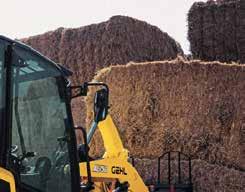
7’ Long, Rd Bale 4’x4’ To 5’x6’, Twin Bale Wrap Stretchers ...............................$28,500
‘20 Tubeline Bale Boss I 3820, Square Bale Processor, 3 x 3 x 8 Bales ........$13,000

‘20 Kuhn Primor 4270M Bale Processor .......................................$24,000
‘03 Gehl 1085, Tandem Axle, Metal Stop, TR3038- 2 Row Corn Head, Chopper In Working Cond ....................................$4,900
Hiniker 4000 15’ Stalk Chopper, 1-3/8
1000PTO ............................................$5,500
Jiffy 920, Bale Processors, New Hammers .................................$12,900
Woods S20ED, 20 Ft, Pull Type Hitch, 4 Rear Tire Option, Side Slice Knives ..............$8,500
NEW Penta Dump Box
Sizes 40, 50, 60
25HP Dsl, 2 Spd, Suspension Seat, 205 hrs .............$16,500
‘04 JD 4520, 45HP Dsl, Hydro Drive System, Cozy Cab w/Heat, 650 hrs .............$32,500


‘20 Kioti K9 2400, CVT Dsl, Canopy, Hyd Dump, Frt & Rear Windshield, 72 hrs, 245 miles .....................................$16,900 Woods M5-4, 5’ Width, 3 point mount, Single Tail Wheel................$1,250
King Kutter L60-40-SC-FH, 540 RPM, 60” Rotary Brush Cutter, 3PT Hitch, 40HP$2,350 Cabelas RC2072 Slip Clutch, 3 pt mt, 6’ Width, Frt & Rear Chains, Single Tail Wheel, Made By Woods .................$2,900
Extreme 69” Brush Cutter, 11-20GMP .....................................$3,250
Virnig Pallet Forks .............................$650
‘18 Grouser Tracks, 18 Pads, Fits JD 320G or Loader with a 44.2” Whl base, All new bushings and pins ..........................$2,300

Grouser 12” Tracks, Fits Cat 246B ..$1,200 Tracks, Fits 2054, 10x16.5 Tires, Has Rubber Pads ..........................$ 1,000
Westendorf 4300, Brush Cutter .......$1,200 Black Max, 22” Blower fan, 76” Width, Hyd Drive with Skid Mts, 21-25 GPM Hyd Requirement ..................................$3,800
TMG Industrial RT120 tiller, 540 PTO, 48”, 3 Pt .........................................$2,800 Farm King F1663G, 74”, 3 pt, Hyd Rotation ..................................$3,000 Bobcat Grapple, 72” Dual Root .....$4,500